Dwarf Royal Palm
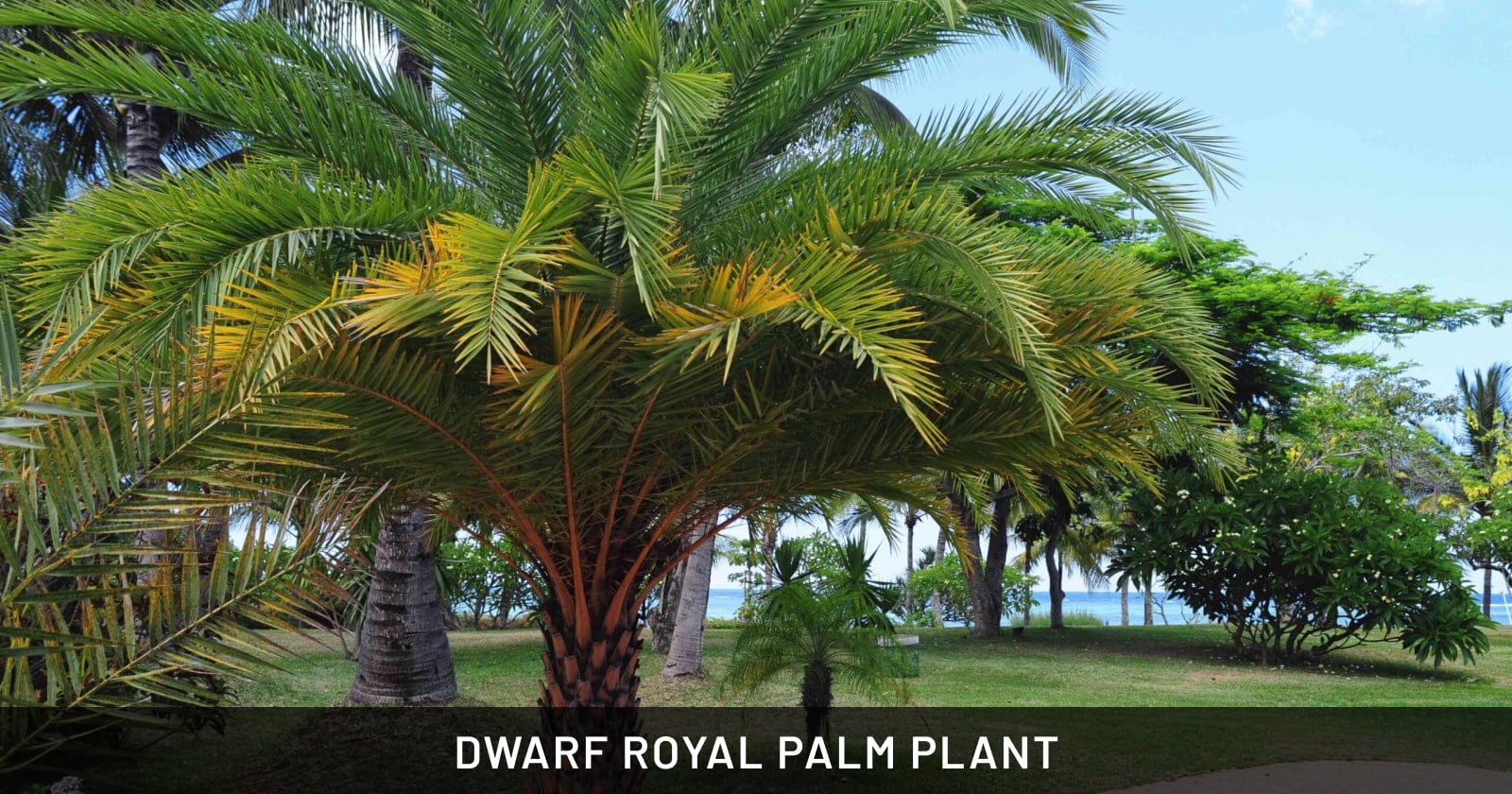
The Dwarf Royal Palm (Roystonea regia), also known as the Miniature Royal Palm or Cuban Royal Palm, is a smaller version of the majestic Royal Palm. Its compact size, compared to the traditional Royal Palm, makes it ideal for use in indoor environments or small outdoor spaces. Known for its stately trunk, feathery fronds, and elegant appearance, this plant adds a tropical flair to any landscape or interior.
In this guide, we will explore everything you need to know about the Dwarf Royal Palm, including care instructions, propagation, landscaping benefits, and its safety for pets.
What is a Dwarf Royal Palm Plant?
The Dwarf Royal Palm is a slow-growing, ornamental palm from the Arecaceae family, native to Cuba, the Caribbean, and South Florida. It is beloved for its compact stature and iconic straight trunk crowned with graceful, arching fronds. While it has the grandeur of its taller counterparts, the Dwarf Royal Palm is more manageable in height, typically growing between 6 to 12 feet when cultivated indoors or in containers.
This palm is ideal for indoor environments, patios, or small gardens, where a touch of the tropics is desired without the height of a full-size palm tree.
Key Facts About Dwarf Royal Palm Plants:
| Feature | Details |
|---|---|
| Botanical Name | Roystonea regia |
| Common Names | Dwarf Royal Palm, Miniature Royal Palm, Cuban Royal Palm |
| Family | Arecaceae (Palm family) |
| Native Region | Cuba, Caribbean, South Florida |
| Growth Habit | Upright, slow-growing |
| Lifespan | Perennial |
| Size | 6 to 12 feet in height; outdoor palms can reach up to 30 feet |
| USDA Zones | 10 to 11 (outdoors), grown indoors in cooler climates |
| Uses | Indoor houseplant, ornamental accent, patio or small garden plant |
The Dwarf Royal Palm is often selected for decorative purposes, especially in tropical-themed gardens and interior design due to its manageable size and graceful aesthetic.
How to Identify a Dwarf Royal Palm Plant
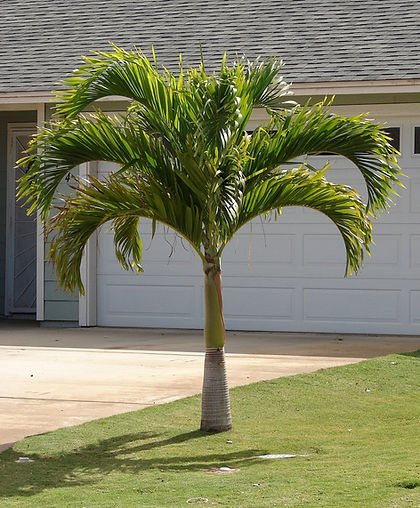
The Dwarf Royal Palm is characterized by its smooth, gray trunk, often with a swollen base, and its green, arching fronds that form a canopy at the top. It closely resembles the full-sized Royal Palm but is significantly smaller and slower-growing, making it easier to manage in confined spaces.
Identification Features of Dwarf Royal Palm:
| Feature | Description |
|---|---|
| Leaves | Large, feathery, and arching fronds with pinnate leaflets. Each frond can grow up to 4-5 feet long in ideal conditions. |
| Trunk | Smooth, gray to white trunk with a slight bulge at the base. The trunk is cylindrical and tapers as it rises. |
| Growth Habit | Upright, slow-growing with a symmetrical crown of fronds that form a dense canopy. |
| Flowers | Produces small, white flowers, though flowering is rare in indoor settings. Outdoors, these can lead to small, round fruits. |
Species Variety
The Dwarf Royal Palm is typically associated with the same species as the Cuban Royal Palm (Roystonea regia), though smaller and often cultivated for indoor or limited space use. It shares many of the characteristics of its larger counterpart, including its elegant fronds and straight, columnar trunk.
- Roystonea regia: The full-sized Royal Palm, commonly found in tropical climates, can reach up to 60-70 feet in height.

- Roystonea oleracea: Another closely related variety, the Venezuelan Royal Palm, which is also significantly taller but bears a similar appearance.
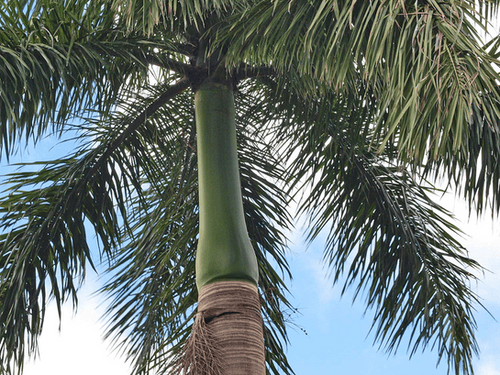
Dwarf Royal Palm Plant Care Tips: How to Grow a Healthy Dwarf Royal Palm
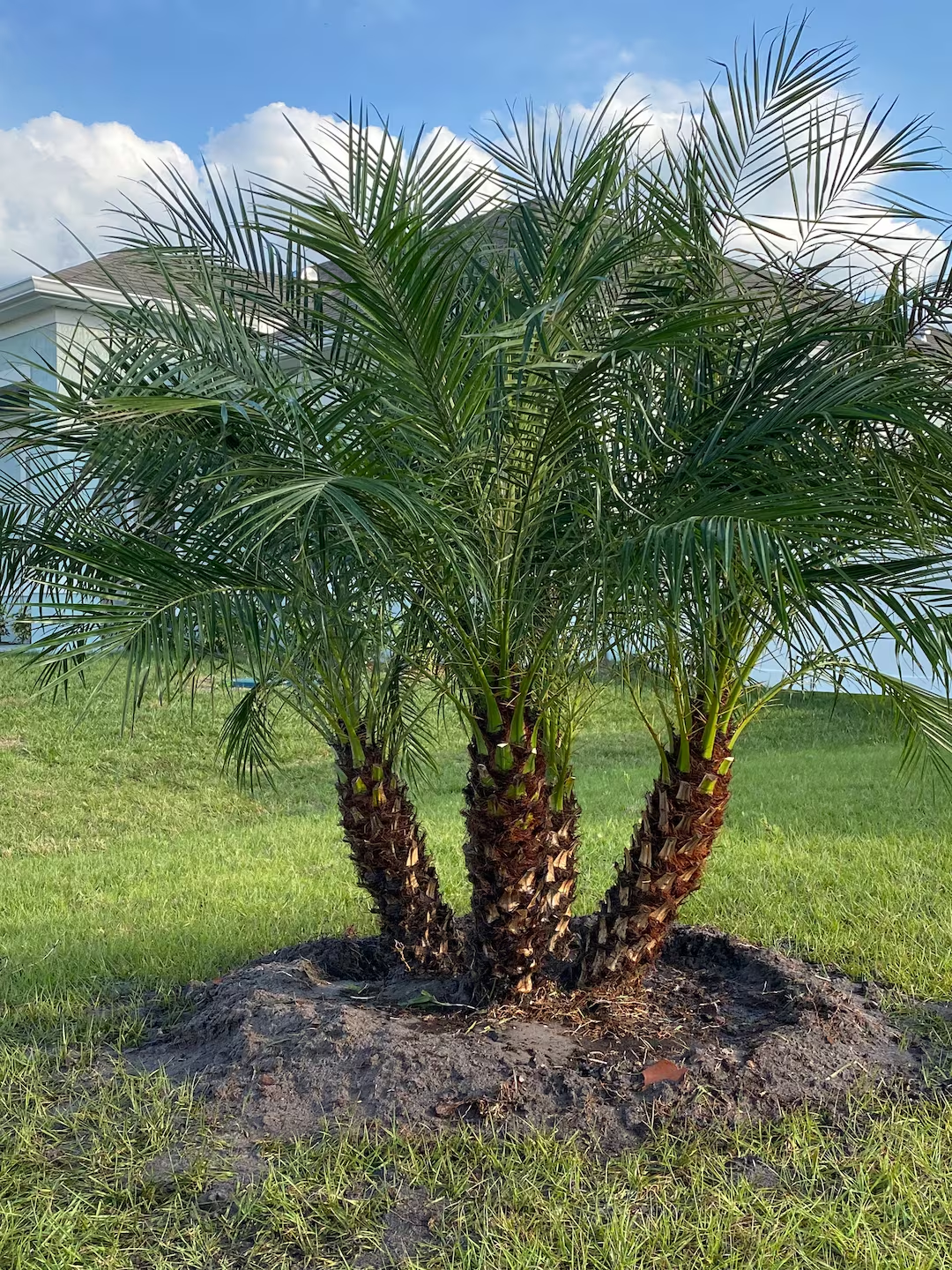
The Dwarf Royal Palm is relatively easy to care for, thriving in indirect sunlight and well-drained soil. While it is hardy in tropical climates, it can also be grown indoors with the right care, making it a versatile plant for various environments.
Light Requirements
- Bright, Indirect Light: The Dwarf Royal Palm thrives in bright, indirect light, though it can also tolerate partial shade. Outdoors, it does best in filtered sunlight or areas where it receives morning sun and afternoon shade.
- Ideal Placement: When grown indoors, place the plant near a south- or west-facing window for maximum light exposure without harsh direct sunlight.
Watering Needs
- Moderate Watering: Water your Dwarf Royal Palm when the top 2 inches of soil feel dry. It prefers evenly moist soil but does not tolerate standing water, so avoid overwatering.
- Indoor Care: In indoor settings, reduce watering during the winter months, as the plant’s growth slows.
Soil Preferences
- Well-Draining Soil: The Dwarf Royal Palm requires well-draining, sandy soil to prevent root rot. A good-quality palm or cactus potting mix with added perlite or sand will help ensure proper drainage.
- If planting outdoors, make sure the soil is light, slightly acidic, and well-drained to prevent waterlogging.
Temperature and Humidity
- Warm Temperatures: This tropical palm thrives in temperatures between 65°F and 85°F (18°C to 29°C). Keep it indoors during colder months if you live in a cooler climate.
- Moderate to High Humidity: The Dwarf Royal Palm prefers moderate to high humidity levels, especially in indoor environments. Misting the plant occasionally or using a humidifier in dry climates will help keep its fronds healthy.
Fertilizing Dwarf Royal Palm Plants
- Monthly Feeding: During the growing season (spring and summer), feed your Dwarf Royal Palm with a slow-release, palm-specific fertilizer or a balanced liquid fertilizer diluted to half strength every 4-6 weeks.
- Reduce feeding during winter, as the plant’s growth naturally slows.
Pruning
- Minimal Pruning: The Dwarf Royal Palm requires minimal pruning. Remove any brown or dead fronds near the base to keep the plant looking tidy. Be careful not to cut off healthy green fronds, as these are vital to the plant’s growth and energy production.
Edibility and Toxicity: Can You Eat Dwarf Royal Palm Plants?
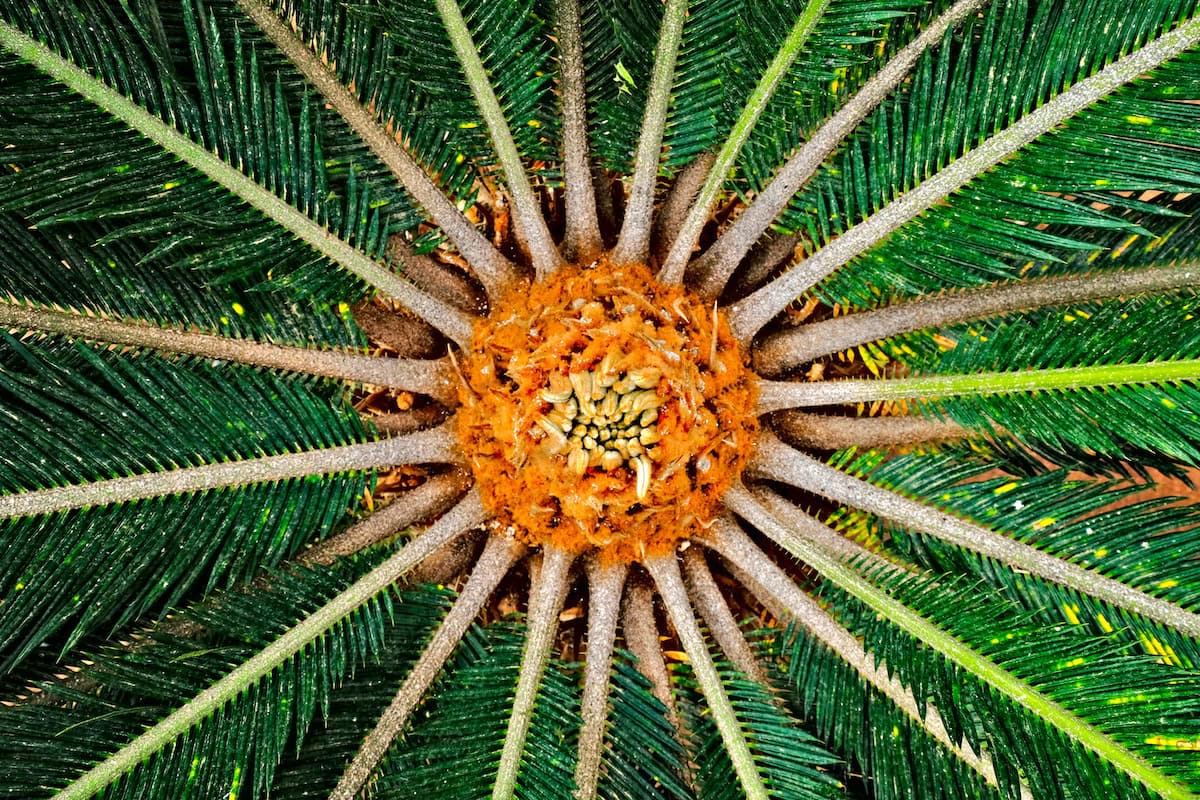
While the Dwarf Royal Palm is primarily ornamental, some parts of the larger Royal Palm have been used in traditional practices. However, the Dwarf Royal Palm itself is not considered edible.
Edible Parts of Dwarf Royal Palm:
- Non-Edible: The Dwarf Royal Palm is not edible and is grown solely for ornamental purposes.
Toxicity:
- Non-Toxic: The Dwarf Royal Palm is considered non-toxic to humans, dogs, and cats, making it a safe choice for homes with pets and children.
- Safety for Pets: It is pet-friendly and does not pose a toxic threat if chewed or ingested in small amounts.
Safety Tips:
- While the plant is non-toxic, it’s always a good idea to supervise pets or small children to avoid them damaging the fronds or ingesting large amounts of the plant.
Medicinal and Herbal Uses of Dwarf Royal Palm: What Are Its Benefits?
Although the Dwarf Royal Palm does not have widespread medicinal uses, its larger cousin, the Royal Palm, has been utilized in traditional practices.
Traditional Medicinal Uses:
- Fiber and Crafts: In some regions, parts of the Royal Palm are used for making ropes, mats, and baskets, although these uses are more practical than medicinal.
Modern Uses:
- Ornamental: The Dwarf Royal Palm is widely grown for its ornamental value rather than for medicinal purposes. It adds a tropical ambiance to homes, offices, and patios, improving both aesthetic and air quality.
Precautions:
- Non-Medicinal: The plant is not used for medicinal purposes, and ingestion of any part of the plant is not recommended.
How to Plant and Propagate Dwarf Royal Palm
Propagating a Dwarf Royal Palm can be a slow process, especially if grown from seeds. However, it is possible with patience and the right conditions.
Planting Dwarf Royal Palm from Seeds:
- Step 1: Collect seeds from a mature plant or purchase them from a reliable source. Soak the seeds in warm water for 24 hours to soften the outer shell.
- Step 2: Plant the seeds in a well-draining potting mix, about ½ inch deep. Cover the container with plastic wrap to create a humid environment.
- Step 3: Place the container in a warm, bright spot (but not in direct sunlight). Keep the soil consistently moist but not soggy.
- Step 4: Germination can take several weeks to months, so patience is key. Once the seedlings are a few inches tall, they can be transplanted into individual pots.
Propagation by Pups:
The Dwarf Royal Palm typically does not produce pups (offshoots), so propagation is primarily done through seeds.
Best Planting Time:
- Spring and Early Summer: Planting or propagating Dwarf Royal Palm is most successful during the growing season, in spring and early summer, when the plant is actively growing.
How to Use Dwarf Royal Palm in Landscaping
The Dwarf Royal Palm is highly valued for its aesthetic appeal and is commonly used in both indoor and outdoor landscaping. Its slow growth and manageable size make it a perfect choice for patios, entryways, and indoor gardens.
Aesthetic and Landscaping Benefits:
- Compact Size: The Dwarf Royal Palm’s compact size makes it ideal for small gardens, patios, or as an accent plant in larger garden designs.
- Tropical Look: Its feathery fronds and stately trunk bring a tropical feel to any setting, even in cooler climates where palms are typically not grown outdoors.
- Indoor Elegance: It works well in large containers indoors, adding a touch of luxury and tropical ambiance to living rooms, offices, or entryways.
Design Ideas:
- Patio Containers: Place your Dwarf Royal Palm in a large, decorative pot on your patio or balcony to create a lush, tropical retreat.
- Entryways: Use this plant in entryways or hallways to make a statement with its elegant, arching fronds.
- Poolside Planting: In warmer climates, the Dwarf Royal Palm makes a great poolside plant, adding a tropical atmosphere to outdoor relaxation areas.
Pest and Disease Control: Common Problems with Dwarf Royal Palm
Though generally low-maintenance, the Dwarf Royal Palm can encounter pests and diseases, particularly if grown in poor conditions.
Common Pests:
- Spider Mites: These tiny pests thrive in dry conditions and can cause yellowing or stippling on the leaves. Increase humidity and treat with neem oil or insecticidal soap.
- Mealybugs: Mealybugs may appear as cotton-like clumps on the fronds and stems. Treat with a cotton swab dipped in rubbing alcohol or apply insecticidal soap.
- Scale: These small, brown or black bumps attach to the fronds and stems. Scale insects can be treated with neem oil or manually removed.
Pest Control Tips:
- Neem Oil: Applying neem oil or insecticidal soap will help control pests such as spider mites and mealybugs.
- Regular Inspection: Regularly inspect your plant for signs of pests and remove any affected fronds to prevent infestations from spreading.
Common Diseases:
- Root Rot: Overwatering or poorly drained soil can lead to root rot, causing the plant to wilt or turn yellow. Ensure the plant is in well-draining soil, and water only when the top 2 inches of soil are dry.
- Leaf Spot: Fungal infections may cause brown or black spots on the fronds. Improve air circulation around the plant and treat with a fungicide if necessary.
Solutions:
- Proper Watering: Avoid overwatering and ensure the plant is in a container with adequate drainage to prevent root rot.
- Fungicide Treatment: Treat fungal infections with a fungicide, and prune any affected fronds to prevent the spread of disease.
Pet Safety: Are Dwarf Royal Palm Plants Safe for Dogs and Cats?
One of the key advantages of the Dwarf Royal Palm is that it is considered non-toxic to both humans and animals, making it a great choice for households with pets.
Toxicity to Pets:
- Non-Toxic: The Dwarf Royal Palm is completely safe for pets, so you don’t need to worry if your dog or cat happens to chew on the fronds.
What to Do if Your Pet Eats Dwarf Royal Palm:
- No Action Needed: Since the plant is non-toxic, there’s no cause for concern if your pet nibbles on it. However, excessive chewing should be discouraged to avoid damage to the plant.
Pet-Friendly Alternatives:
If you are looking for other pet-safe plants to complement your Dwarf Royal Palm, consider the following:
- Spider Plant (Chlorophytum comosum)
- Boston Fern (Nephrolepis exaltata)
- Areca Palm (Dypsis lutescens)
Where to Buy or Acquire Dwarf Royal Palm Plants
Dwarf Royal Palms are available at most nurseries, garden centers, and online retailers. They are typically sold as young plants or potted specimens, making them easy to integrate into your home or garden.
Considerations When Buying Dwarf Royal Palm:
- Look for plants with healthy, green fronds and no signs of yellowing or pest infestations.
- Check that the plant is potted in well-draining soil, and avoid purchasing palms that appear root-bound or waterlogged.
Top Places to Purchase Dwarf Royal Palm Plants:
- Local Nurseries: Many garden centers carry Dwarf Royal Palms, particularly in tropical or warm climate regions.
- Online Retailers: Websites like Amazon, Etsy, and specialty palm nurseries offer a wide selection of Dwarf Royal Palms for purchase.
Price Range:
- Small Plants: $20 to $40 for young, potted plants.
- Medium Plants: $40 to $80 for more established specimens.
- Large Plants: $100 to $200 for mature, larger palms, depending on the size and retailer.
The Dwarf Royal Palm (Roystonea regia) is a beautiful and versatile addition to any indoor or outdoor space, offering the elegance and tropical feel of a Royal Palm in a more compact size. Its manageable growth, non-toxic nature, and relatively low maintenance needs make it perfect for homeowners, office environments, and patios.
With proper care, your Dwarf Royal Palm will thrive, adding tropical beauty and graceful greenery to your home or garden for years to come.